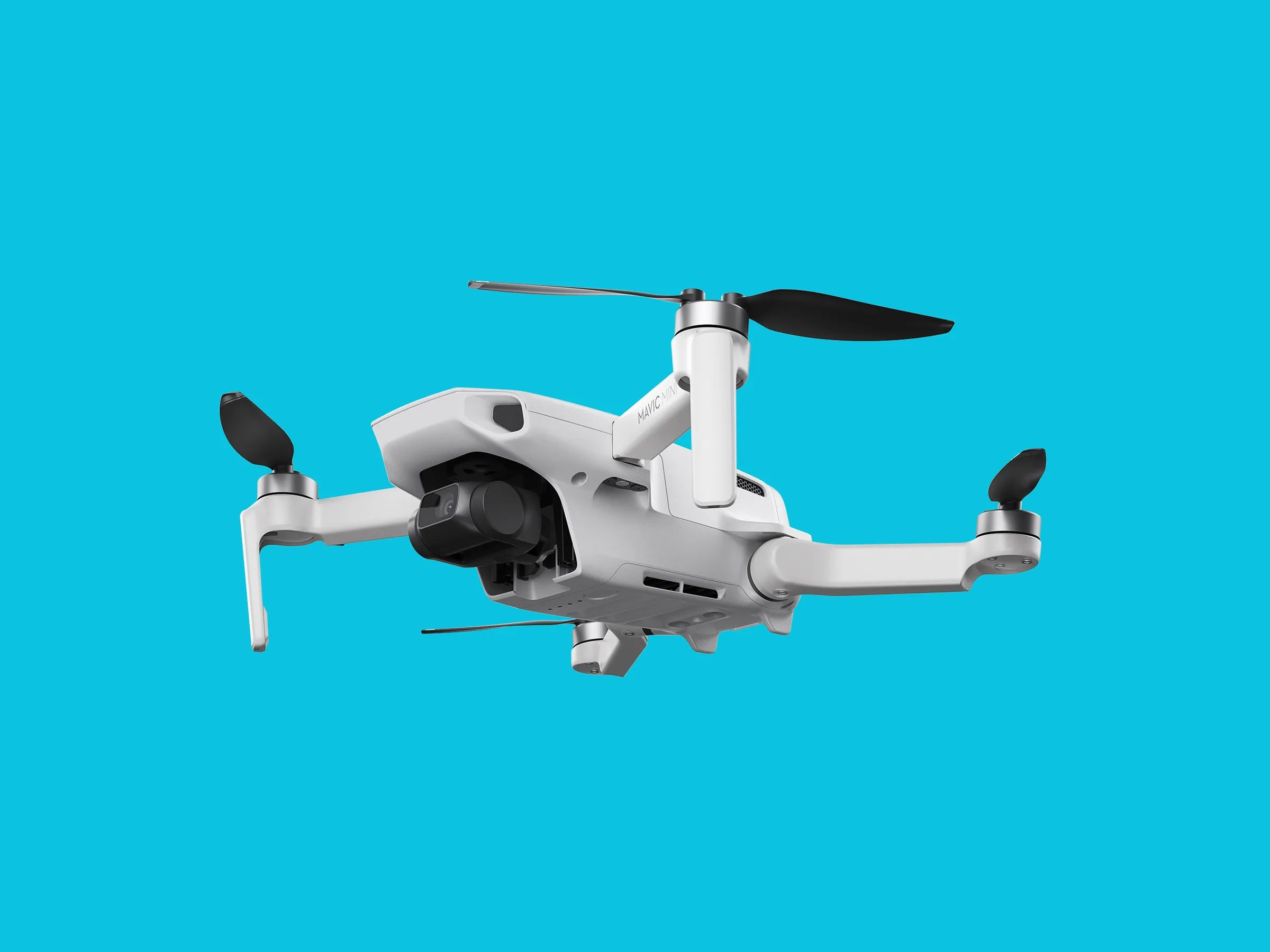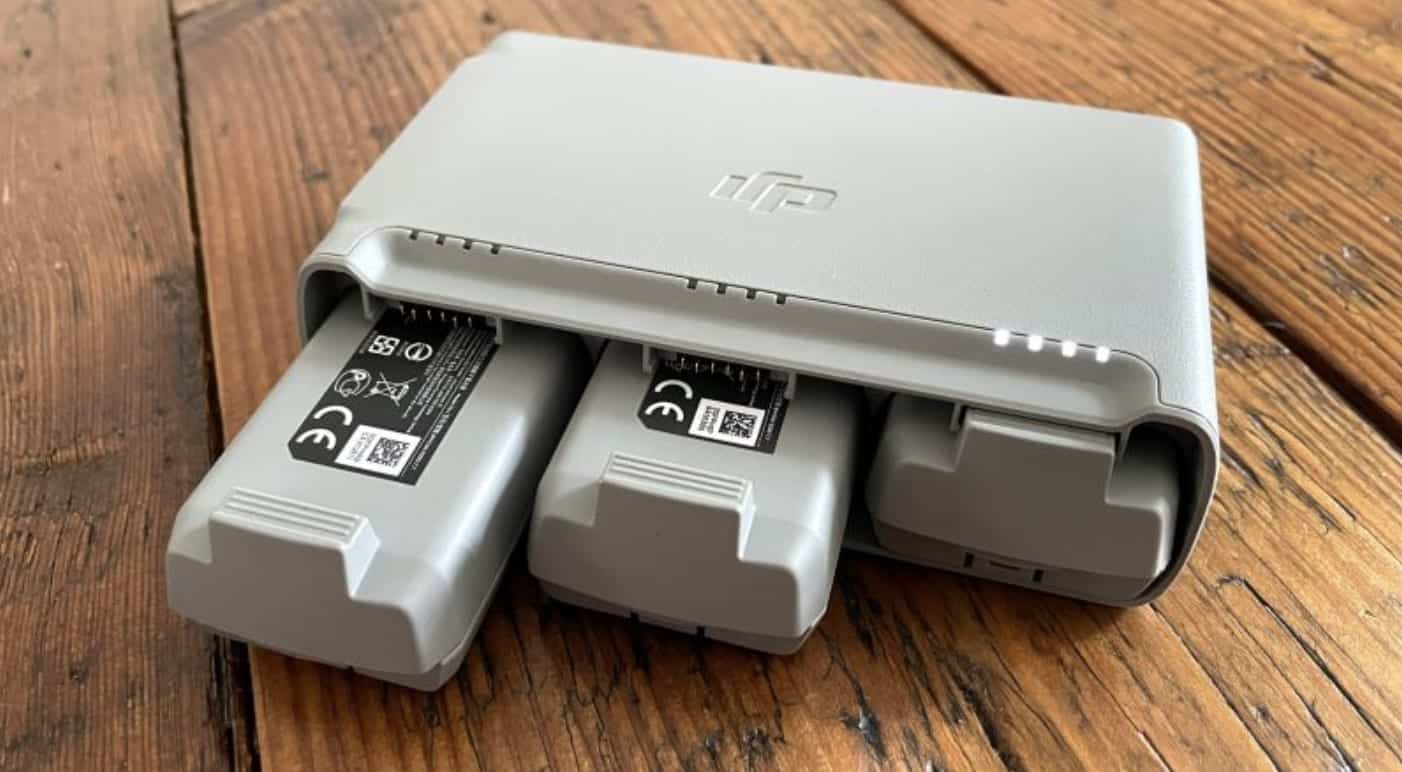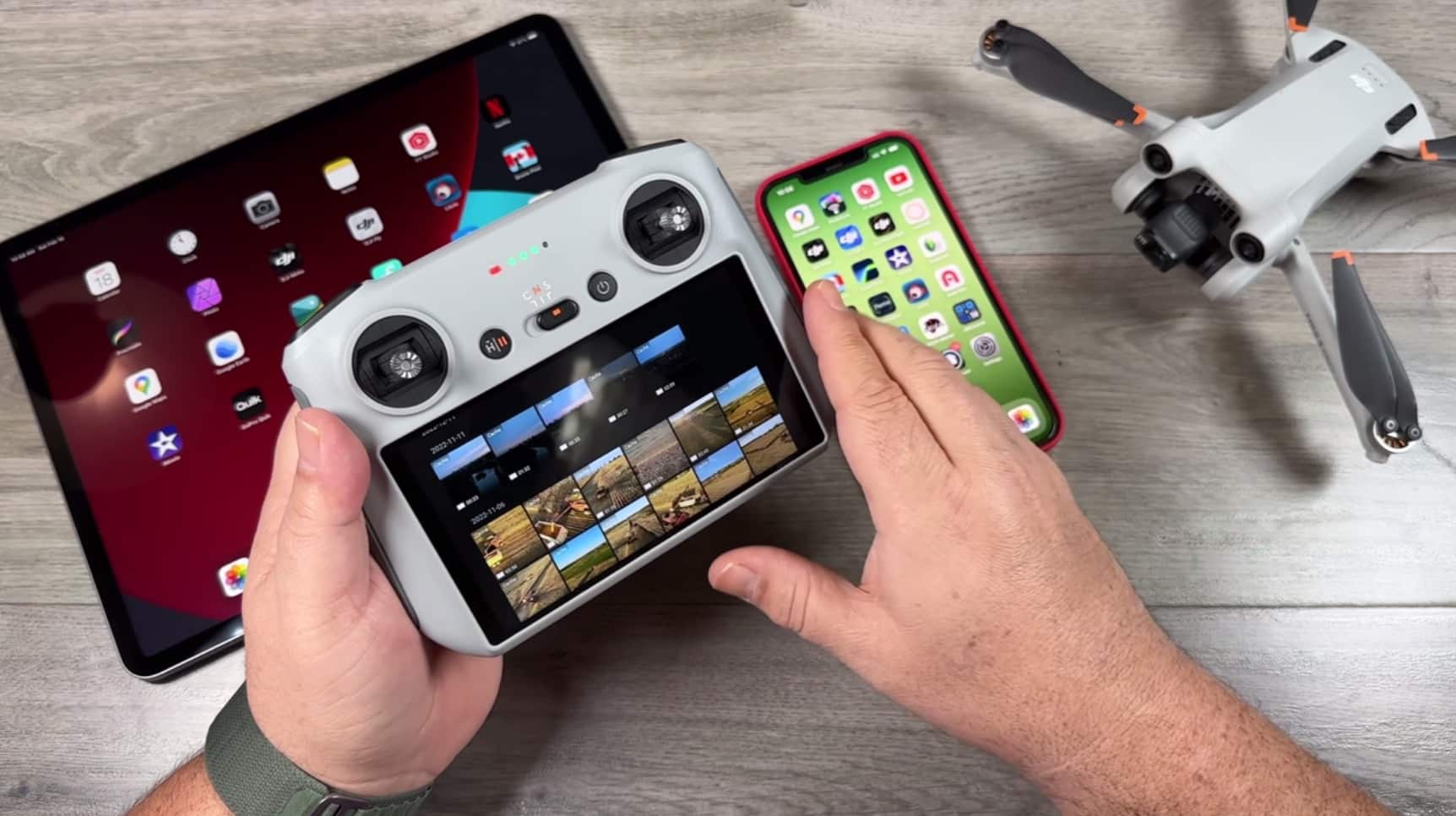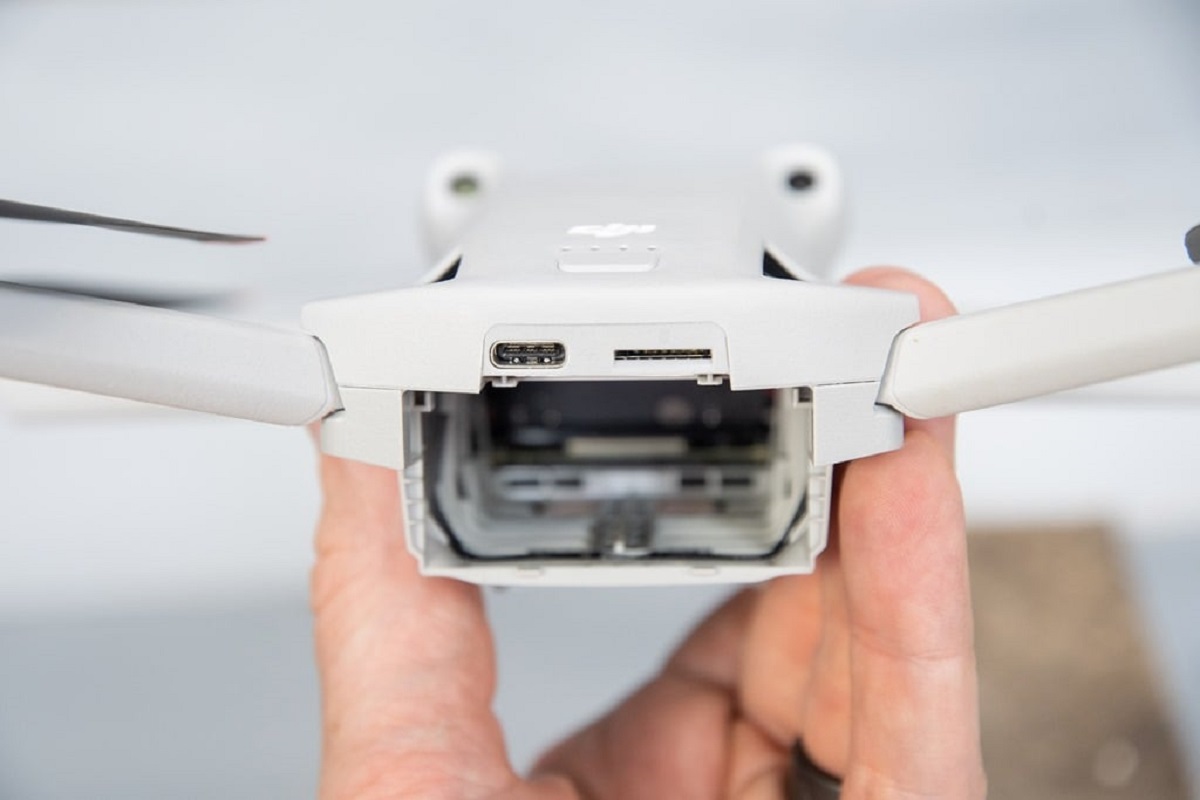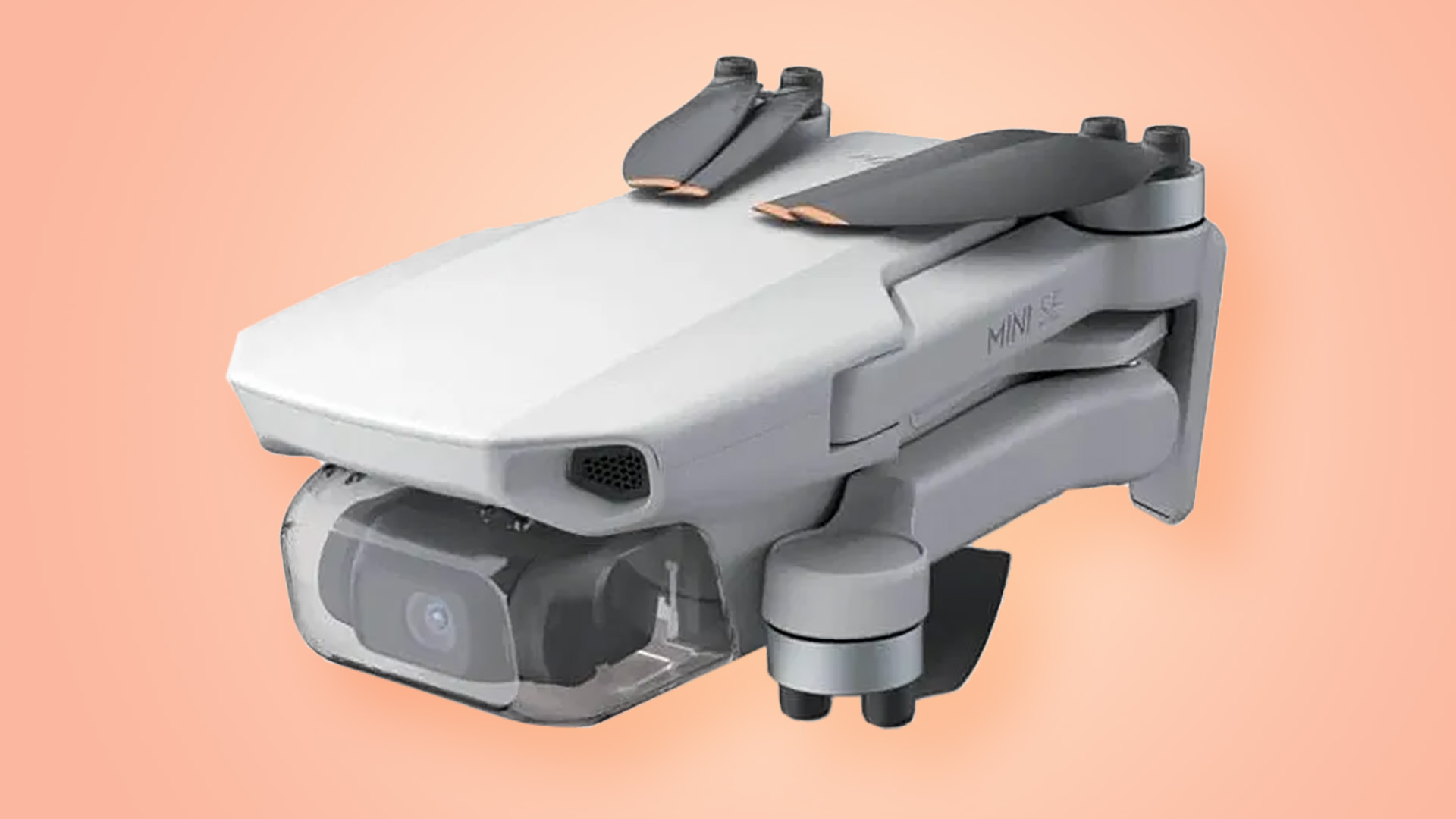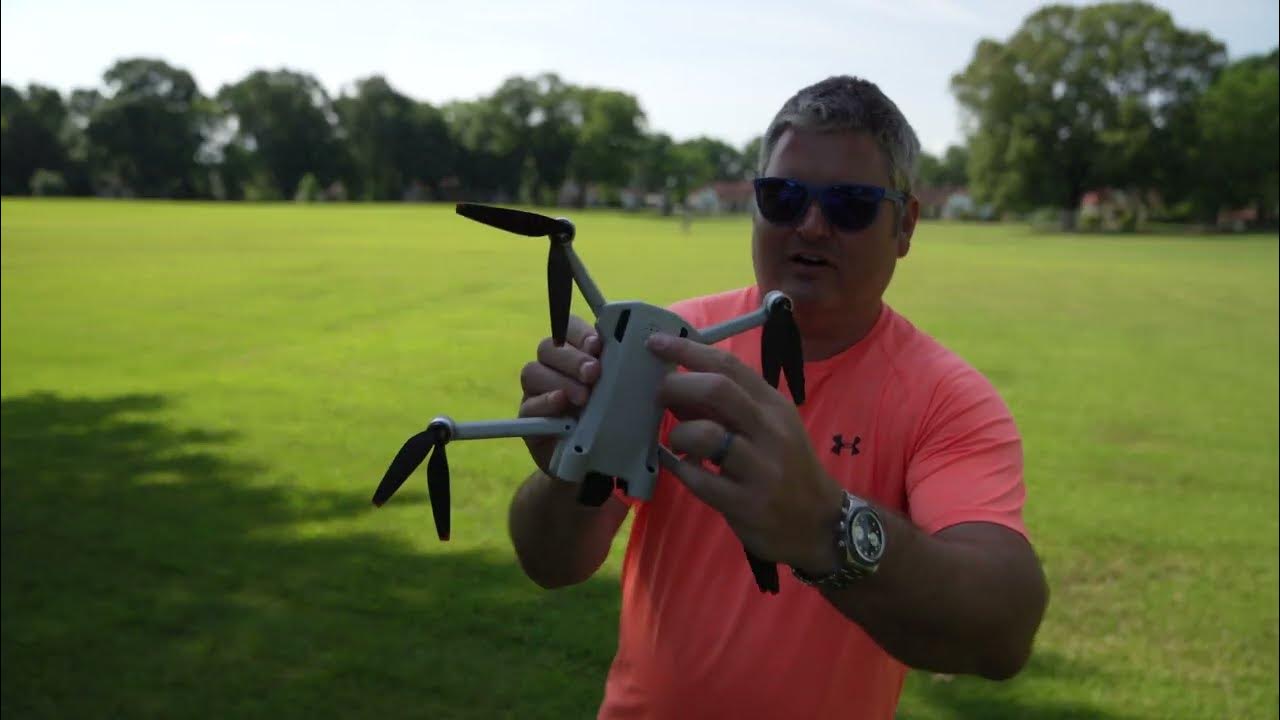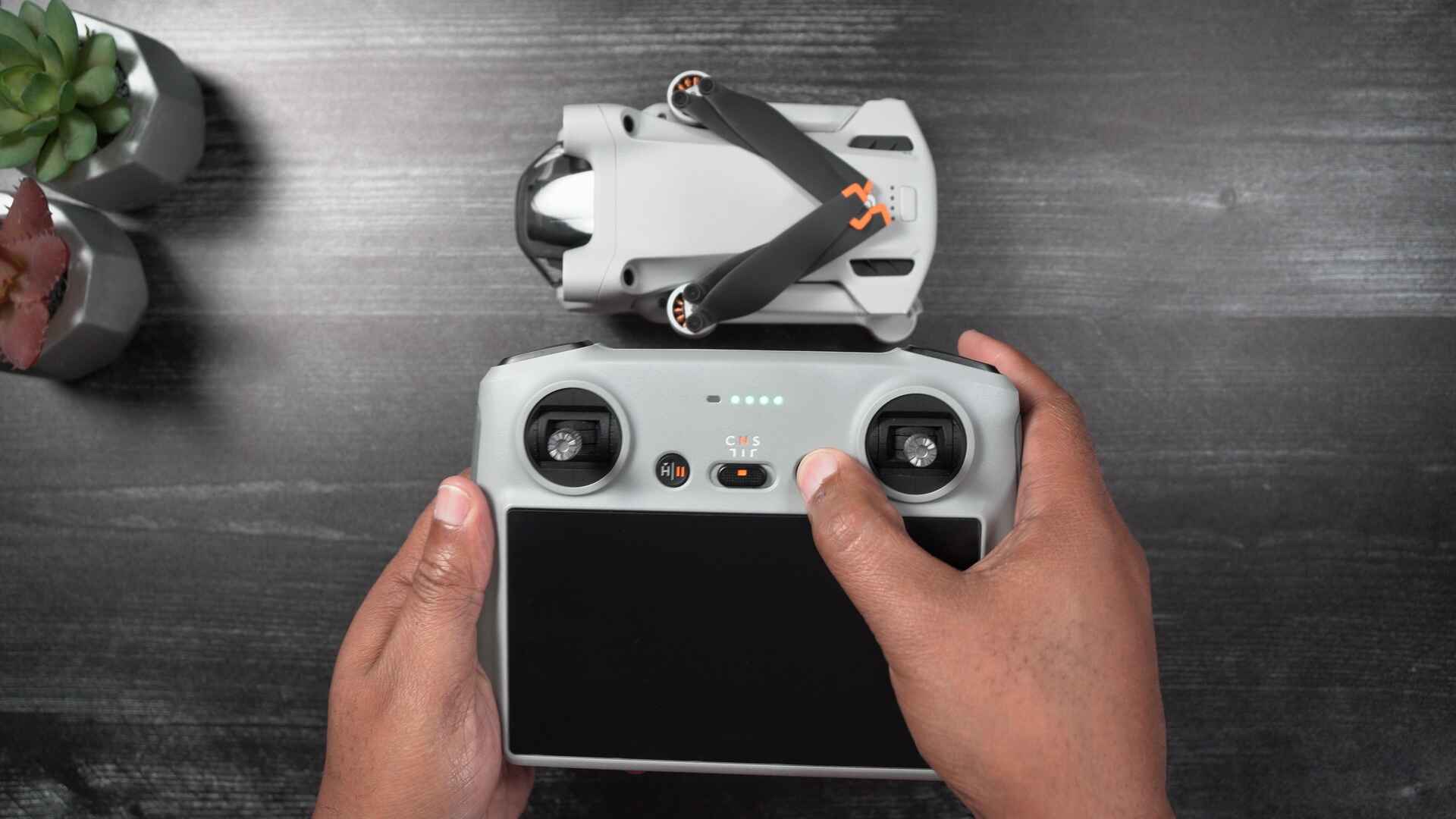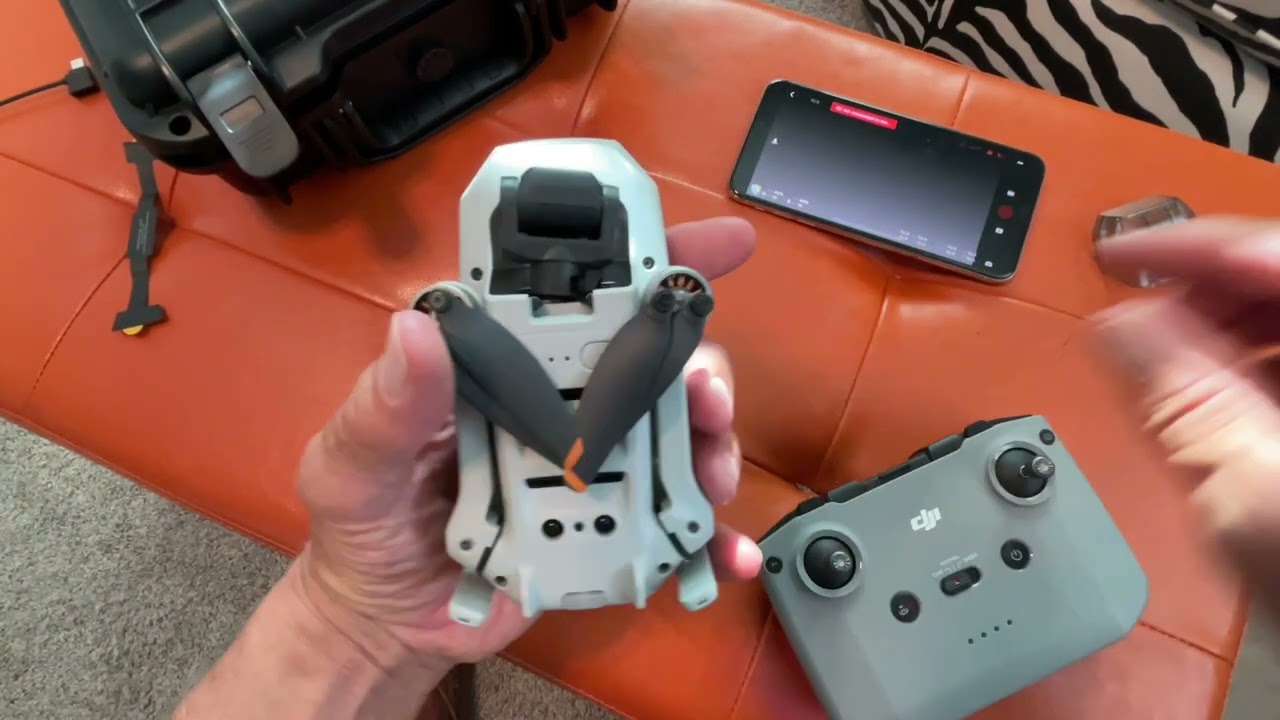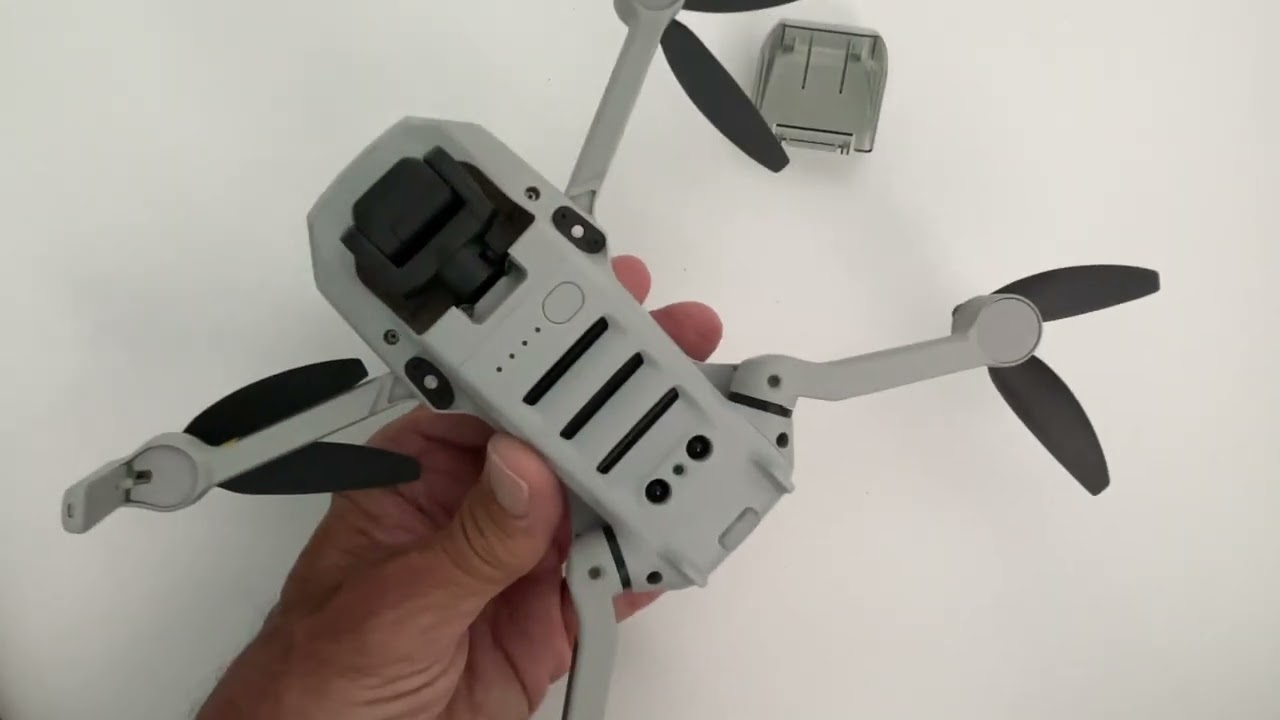Charging the DJI Mini
Before you can take flight with your DJI Mini, it’s important to ensure that the batteries are fully charged. Follow these steps to charge your DJI Mini and get ready for your first adventure:
- Plug the charging cable into the battery charger that comes with the DJI Mini.
- Connect the charger into a power outlet.
- Insert the battery into the charger, making sure that the charging contacts align properly.
- The LED indicator on the charger will turn red to indicate that the battery is charging.
- Allow the battery to charge until the LED indicator turns green, indicating that the battery is fully charged.
- Once fully charged, remove the battery from the charger and insert it into its designated slot on the DJI Mini.
It’s important to note that the battery charging time may vary depending on the capacity of the battery and the power source. It’s recommended to use the original charger and power source provided by DJI to ensure optimal charging performance.
Make sure to also regularly check the battery level on the DJI Fly app to ensure that you have sufficient power for your flight. Charging the batteries fully before each flight will help maximize your flight time and ensure a smooth flying experience with the DJI Mini.
Downloading and Installing the DJI Fly App
The DJI Fly app is an essential companion for your DJI Mini, as it allows you to control your drone, access advanced flight features, and manage your media content. Here’s how you can download and install the DJI Fly app:
- Visit the App Store (for iOS devices) or Google Play Store (for Android devices) on your mobile device.
- Search for “DJI Fly” in the search bar.
- Click on the app and tap the “Install” or “Get” button to begin the downloading process.
- Once the download is complete, open the DJI Fly app on your device.
- Follow the on-screen prompts to create a DJI account or log in with your existing account.
- After logging in, connect your DJI Mini to your mobile device using the USB cable provided.
- The app should automatically detect your DJI Mini and prompt you to connect.
- Once connected, you’re ready to explore the various features and settings of the DJI Fly app.
It’s crucial to ensure that you have a stable internet connection during the download and installation process to avoid any interruptions. Additionally, make sure that your mobile device meets the system requirements for the DJI Fly app to ensure optimal performance.
The DJI Fly app provides a user-friendly interface with intuitive controls and features. Take some time to familiarize yourself with the app’s layout and settings, as it will greatly enhance your overall flying experience with the DJI Mini.
Updating Firmware for the DJI Mini
Regularly updating the firmware of your DJI Mini is essential to ensure optimal performance, reliability, and access to the latest features and functions. Follow these steps to update the firmware for your DJI Mini:
- Ensure that your DJI Mini battery is fully charged and inserted correctly into the drone.
- Connect your mobile device with the DJI Fly app to the DJI Mini using the provided USB cable.
- Open the DJI Fly app and navigate to the settings menu.
- Tap on the “About” or “Device” section.
- Check if there is a firmware update available for your DJI Mini.
- If an update is available, follow the on-screen instructions to initiate the update process.
- Make sure that your DJI Mini and mobile device are connected to a stable internet connection during the update.
- Allow the update to complete, which may take a few minutes.
- Once the update is finished, restart your DJI Mini by powering it off and then on again.
It’s crucial to update the firmware to ensure your DJI Mini is equipped with the latest features, performance improvements, and bug fixes. Firmware updates often bring new flight modes, enhanced stability, and increased safety measures, so it’s highly recommended not to skip these updates.
Always remember to follow the instructions carefully and avoid interrupting the update process to prevent any potential issues. Keeping your DJI Mini up to date will help ensure that you have the best flying experience and take advantage of all the capabilities offered by your drone.
Setting Up the DJI Mini for Flight
Before taking the DJI Mini to the skies, it’s important to properly set up your drone and ensure that all necessary preparations are made. Follow these steps to get your DJI Mini ready for flight:
- Choose a suitable location for your flight. Find an open area away from obstacles such as trees, power lines, and buildings.
- Ensure that the DJI Mini’s propellers are securely attached. Gently push and twist each propeller to confirm they are locked in place.
- Power on your DJI Mini by pressing and holding the power button on the battery until the LED lights illuminate.
- Launch the DJI Fly app on your mobile device and connect to your DJI Mini using the provided USB cable.
- Calibrate the compass by following the prompts in the DJI Fly app. This step is crucial for accurate flight performance.
- Check the GPS signal status on the app to ensure a stable connection between your DJI Mini and the satellites.
- Perform a quick pre-flight check by confirming that the battery level is sufficient, all control inputs are responsive, and the camera and gimbal are functioning properly.
- Check the local aviation regulations and any specific guidelines or restrictions that may apply to your location.
- Observe the weather conditions. Avoid flying in strong winds, rain, or other adverse weather conditions that may affect the performance and safety of your DJI Mini.
- Once you have completed these steps, you are ready to take the DJI Mini to the sky and start enjoying your flight.
It’s crucial to ensure that you have completed all the setup steps correctly to ensure a safe and enjoyable flight experience with your DJI Mini. Taking the time to properly set up your drone will help prevent any potential issues and maximize your overall flying experience.
Understanding the Flight Modes of the DJI Mini
The DJI Mini comes equipped with various flight modes that offer different features and capabilities to enhance your flying experience. Understanding these flight modes will allow you to unleash the full potential of your DJI Mini. Here are the key flight modes to familiarize yourself with:
- Normal Mode: This is the default flight mode of the DJI Mini. It provides basic flight controls, allowing you to manually pilot the drone using the controller.
- Position Mode: In this mode, the DJI Mini utilizes GPS and signals from satellites to maintain a stable hover in the air. It is ideal for capturing steady aerial shots and focusing on capturing photos or videos.
- Sport Mode: Sport mode unleashes the full speed and agility of the DJI Mini, allowing you to fly at higher speeds and perform quick maneuvers. It is perfect for capturing action shots or tracking fast-moving subjects.
- CineSmooth Mode: This mode slows down the DJI Mini’s movements, making it easier to capture smooth cinematic shots with gentle camera movements. It is ideal for capturing beautiful, cinematic footage.
- Waypoints Mode: In this mode, you can pre-plan a flight path by setting waypoints on the map in the DJI Fly app. The DJI Mini will automatically fly along the designated route, allowing you to focus on capturing creative shots.
- QuickShot Mode: QuickShot mode offers a selection of automated shot options, such as Dronie, Circle, Helix, and Rocket. Simply select the desired mode, and the DJI Mini will perform pre-programmed flight movements, capturing dynamic shots effortlessly.
- Return to Home (RTH) Mode: This mode allows the DJI Mini to automatically return to its takeoff point. It is activated when the battery is running low or when the connection between the drone and controller is lost. RTH ensures a safe and controlled return of your DJI Mini.
Each flight mode offers unique advantages and functionalities, so it’s essential to understand and utilize them effectively to achieve the desired aerial shots and flight experience. Take the time to practice and experiment with each mode to unleash your creativity and explore the full capabilities of your DJI Mini.
Basic Controls and Flying Techniques for the DJI Mini
Mastering the basic controls and flying techniques for the DJI Mini is essential for a smooth and enjoyable flight experience. Understanding how to maneuver the drone effectively will allow you to capture amazing aerial shots and navigate with confidence. Here are the key controls and flying techniques to familiarize yourself with:
- Takeoff and Landing: Before taking off, ensure that the DJI Mini is in an open area free from obstacles. To take off, push the control sticks gently inward, and the drone will lift off. To land, gradually lower the DJI Mini to the ground by pulling the control sticks downward.
- Basic Movement: The DJI Mini responds to the movement of the control sticks on the remote controller. Pushing the right control stick forward or backward controls the drone’s pitch or tilt, while pushing it left or right adjusts the roll. The left control stick controls the throttle or altitude. Mastering these movements will allow you to navigate your drone smoothly.
- Yaw Control: The DJI Mini’s yaw control allows you to rotate the drone horizontally. By twisting the left control stick left or right, you can change the direction the drone is facing, providing you with different camera angles and perspectives.
- Utilize GPS and Visual Positioning System (VPS): The DJI Mini utilizes GPS and VPS technologies to maintain stability, altitude, and position. It’s important to ensure a strong GPS signal before initiating any flight maneuvers. The VPS system helps the drone maintain its height and stability when flying at low altitudes indoors or in areas with weak GPS signals.
- Obstacle Avoidance: While the DJI Mini doesn’t have advanced obstacle avoidance sensors like some higher-end drones, it’s important to always fly with caution and keep a close eye on your surroundings. Avoid flying near obstacles and maintain a safe distance to prevent collisions.
- Smooth Movements: To capture stunning aerial footage, aim for smooth and gentle movements. Avoid sudden jerks or fast maneuvers that can result in shaky footage. Practice controlling the DJI Mini with finesse, ensuring seamless and cinematic shots.
- Flight Safety: Always prioritize safety when flying the DJI Mini. Familiarize yourself with local regulations and adhere to the guidelines provided by the aviation authority in your country. Respect privacy and avoid flying over restricted areas or near airports.
Mastering these basic controls and flying techniques will enable you to navigate your DJI Mini confidently and capture breathtaking aerial shots. Remember to practice regularly and gradually advance to more advanced maneuvers and flight modes to unlock the full potential of your DJI Mini.
Capturing Photos and Videos with the DJI Mini
The DJI Mini is equipped with a high-quality camera that allows you to capture stunning photos and videos from the sky. Whether you’re a beginner or an experienced aerial photographer, understanding the camera features and shooting techniques will enable you to capture breathtaking aerial imagery. Here are some tips for capturing photos and videos with the DJI Mini:
- Camera Settings: Familiarize yourself with the camera settings in the DJI Fly app. Adjust parameters such as photo resolution, video resolution, white balance, and exposure to suit your shooting needs and the lighting conditions.
- Composition: Just like photography on the ground, composition plays a crucial role in capturing compelling aerial photos. Consider the rule of thirds, leading lines, and interesting subjects to create visually appealing compositions.
- Camera Modes: Experiment with different camera modes such as single shot, burst mode, and interval shooting to capture a variety of perspectives and moments. Burst mode is great for capturing action shots, while interval shooting allows you to create stunning time-lapse sequences.
- Manual Camera Controls: For more advanced users, the DJI Mini offers manual camera controls. Take advantage of features like manual exposure, ISO, and shutter speed to have full control over your shots and achieve the desired creative effects.
- Focus and Metering: The DJI Mini has autofocus capabilities, but it’s important to ensure that your subject is properly focused. Tap on the subject on the app’s screen to adjust the focus point. Additionally, pay attention to the exposure metering and adjust it accordingly for well-exposed photos and videos.
- Stabilization: The DJI Mini’s 3-axis gimbal provides remarkable stabilization, allowing you to capture smooth and steady footage. Take advantage of this feature to record professional-looking videos with minimal camera shake.
- Experiment with Camera Movements: Explore different camera movements such as tilting, panning, and tracking to add dynamism to your videos. Slow and controlled movements often result in more cinematic shots.
- Post-processing: Once you’ve captured your photos and videos, consider enhancing them further through post-processing. Use editing software to adjust colors, contrast, and apply creative effects to make your aerial imagery truly stand out.
Remember to always fly responsibly and adhere to local laws and regulations regarding aerial photography. Respect privacy and avoid invading others’ personal spaces. With practice and creativity, you’ll be able to capture breathtaking photos and videos that showcase the beauty of the world from a unique perspective using your DJI Mini.
Adjusting Camera Settings on the DJI Mini
The DJI Mini offers a range of camera settings that allow you to customize and fine-tune your aerial photography and videography. Understanding and adjusting these settings will help you capture the perfect shots and achieve your desired creative vision. Here’s how you can adjust camera settings on the DJI Mini:
- Resolution: The DJI Mini allows you to choose the resolution of your photos and videos. Higher resolution settings offer more detail, but also result in larger file sizes. Consider the purpose of your media and the available storage space before selecting a resolution.
- White Balance: White balance affects the color temperature of your photos and videos. Use auto white balance for most scenarios, or manually adjust it based on the lighting conditions to ensure accurate and natural-looking colors.
- Exposure Compensation: Exposure compensation allows you to adjust the brightness of your photos and videos. Use positive compensation to make your shots brighter and negative compensation to darken them. Experiment with different settings to achieve the desired exposure.
- ISO: ISO settings control the sensitivity of the camera’s sensor to light. Lower ISO values are ideal for well-lit conditions, while higher ISO values can be used in low-light situations. Keep in mind that higher ISO settings may introduce more digital noise to your shots.
- Shutter Speed: Shutter speed determines the amount of time the camera’s shutter remains open. Slower shutter speeds allow for more light to enter the sensor, while faster shutter speeds freeze motion. Adjust the shutter speed based on the desired effect, such as capturing motion blur or sharp freeze-frame shots.
- Picture Style: DJI Mini offers different picture styles to enhance the look of your photos and videos. Experiment with styles such as Standard, Art, and Custom to add a unique touch to your media.
- Gridlines: Enable gridlines on the DJI Fly app to assist with composition. Gridlines divide the frame into thirds, helping you align your subject and create well-balanced shots.
- RAW Format: For photographers who prefer to have more control over post-processing, shooting in RAW format captures uncompressed image data, allowing for greater flexibility in editing. However, keep in mind that RAW files take up more storage space.
When adjusting camera settings, always consider the lighting conditions, the type of shot you want to capture, and your own creative preferences. Take the time to experiment with different settings and find the combinations that work best for your shooting style and the specific situation.
Remember to regularly review and adjust your camera settings based on the shooting environment to ensure you capture the best possible photos and videos with your DJI Mini.
Using Intelligent Flight Modes with the DJI Mini
The DJI Mini comes equipped with various intelligent flight modes that can elevate your aerial photography and videography to new heights. These modes automate certain flight functions, allowing you to capture stunning shots effortlessly. Here’s a look at some of the intelligent flight modes available on the DJI Mini:
- QuickShots: QuickShots are pre-programmed flight patterns that enable you to capture professional-looking shots with a single tap. Modes like Dronie, Circle, Helix, and Rocket automatically execute complex flight movements while keeping the subject in focus, allowing you to create dynamic and dramatic footage.
- ActiveTrack: With ActiveTrack, you can select a subject on the DJI Fly app, and the DJI Mini will autonomously track and follow the subject, keeping it within the frame. This mode is perfect for capturing action shots, recording sports activities, or filming moving subjects with ease.
- Gesture Control: Using Gesture Control, you can command the DJI Mini to take photos or videos by simply using hand gestures. This mode is great for capturing selfies or group shots without needing to use the remote controller or app.
- CineSmooth Mode: CineSmooth mode slows down the DJI Mini’s movements, making it easier to capture smooth and cinematic shots. This mode is ideal for achieving professional-grade footage with gentle camera movements.
- Waypoints: Waypoints mode allows you to plan a flight path by selecting specific points on the map in the DJI Fly app. The DJI Mini will then automatically fly along the designated route, giving you the freedom to focus on capturing creative shots.
- Course Lock and Home Lock: Course Lock mode allows you to control the direction of the DJI Mini relative to a set flight path, regardless of its actual orientation. Home Lock mode maintains the same direction as the initial takeoff point, ensuring intuitive flight controls even when the drone is facing a different direction.
These intelligent flight modes offer a range of possibilities, enabling you to capture unique and visually captivating shots effortlessly. Familiarize yourself with each mode and experiment with them to explore the creative potential of your DJI Mini.
While these modes are designed to assist you in capturing stunning footage, it’s important to remain vigilant and maintain situational awareness during flight, especially in complex environments or near obstacles.
By leveraging the intelligent flight modes on the DJI Mini, you’ll be able to capture incredible aerial footage and take your aerial photography and videography to new heights.
Troubleshooting Common Issues with the DJI Mini
While the DJI Mini is designed to provide a seamless and enjoyable flying experience, you may encounter some common issues along the way. Knowing how to troubleshoot these issues can help you resolve them quickly without disrupting your aerial adventures. Here are some common issues with the DJI Mini and steps to troubleshoot them:
- Poor GPS Signal: If you’re experiencing a weak GPS signal, ensure that you are in an open area away from tall buildings or structures that may obstruct satellite signals. Check if your location has a clear line of sight to the sky. If the issue persists, try recalibrating the compass or changing the flight location.
- Connection Problems: If you’re having trouble connecting your DJI Mini to the remote controller or the DJI Fly app, make sure that your devices are paired correctly. Ensure that both the remote controller and the DJI Mini are fully charged and in close proximity. Restart both the drone and the app, and try reconnecting again.
- Battery Issues: If you’re experiencing battery-related problems, make sure that the batteries are properly inserted and securely connected to the drone. Check the battery level on the DJI Fly app to confirm that they are adequately charged. If the batteries are not holding a charge or show signs of abnormal behavior, it may be time to replace them.
- Unresponsive Controls: If the DJI Mini is not responding to your control inputs, check if the remote controller is properly connected and powered on. Ensure that the control sticks are calibrated and functioning correctly. If the issue persists, try restarting the drone and the remote controller and recalibrate the control sticks.
- Camera Malfunction: If you’re having issues with the camera, ensure that the lens is clean and free from any smudges or debris. Check if the camera is properly connected to the DJI Mini. Restart the drone and the DJI Fly app, and try accessing the camera settings again. If the problem persists, contact DJI support for further assistance.
- App Crashes or Freezes: If the DJI Fly app crashes or freezes during use, ensure that you’re using the latest version of the app. Close any unnecessary background apps that may be affecting performance. Restart your mobile device and relaunch the app. If the issue persists, try reinstalling the app or contacting DJI support for further guidance.
Remember, troubleshooting steps may vary depending on the specific issue and circumstances. If you are unable to resolve the problem, reach out to DJI’s customer support for further assistance, as they have the expertise to help you troubleshoot and provide solutions.
By familiarizing yourself with these common issues and troubleshooting steps, you’ll be better equipped to resolve any technical challenges that may arise during your DJI Mini flights and maintain a smooth and enjoyable experience.
Tips and Tricks for Getting the Most Out of Your DJI Mini
The DJI Mini is a powerful and versatile drone that offers incredible aerial capabilities. To help you maximize your experience and unlock the full potential of your DJI Mini, here are some valuable tips and tricks:
- Read the User Manual: Familiarize yourself with the user manual that comes with the DJI Mini. It provides important information on safety guidelines, flight modes, and handling procedures.
- Master the Flight Controls: Practice flying your DJI Mini in an open and obstacle-free area. Spend time mastering the controls, understanding the response of the drone, and gradually push your limits to become a confident pilot.
- Plan Your Flights: Before each flight, plan your flight path, check for any local regulations or airspace restrictions, and scout the location for potential obstacles or hazards. This will help ensure a safe and successful flight.
- Utilize Intelligent Flight Modes: Take advantage of the intelligent flight modes available on the DJI Mini to automate flight functions and capture stunning shots effortlessly. Experiment with different modes to unleash your creative potential.
- Shoot During Golden Hour: The golden hour, which occurs shortly after sunrise or before sunset, offers stunning lighting conditions for photography and videography. During this time, the soft and warm sunlight can add a magical touch to your aerial shots.
- Experiment with Different Perspectives: Explore various angles and viewpoints to add depth and interest to your photos and videos. Try flying at different altitudes, tilting the camera, and capturing unique angles to create visually captivating shots.
- Use ND Filters: Neutral Density (ND) filters can help control the amount of light entering the camera lens, allowing you to achieve better exposure and smoother footage. Invest in a set of ND filters with different densities to adapt to different lighting conditions.
- Edit Your Footage: Once you’ve captured your aerial content, take the time to edit and enhance it using video editing software or apps. Adjust colors, add effects, and trim the footage to create polished and professional-looking videos.
- Join Online Communities: Engage with the DJI community by joining online forums and social media groups. Connect with fellow DJI Mini enthusiasts, share tips, and learn from their experiences. It’s a great way to stay updated and gain insights into drone photography and videography.
- Practice Responsible Flying: Always follow local regulations, respect privacy, and fly responsibly. Do not fly near restricted areas or in sensitive locations. Be mindful of your surroundings, and never operate your drone in a manner that could endanger people or wildlife.
By implementing these tips and tricks, you’ll be able to take your DJI Mini flights to the next level, capturing breathtaking aerial shots and creating unforgettable memories. Remember to prioritize safety, continuous learning, and creativity as you explore the capabilities of your DJI Mini.
Maintenance and Care for the DJI Mini
To ensure the longevity and optimal performance of your DJI Mini, regular maintenance and proper care are essential. Follow these maintenance tips to keep your drone in top condition:
- Clean the Drone: After each flight session, inspect the DJI Mini for any dirt, dust, or debris. Use a soft, lint-free cloth or a brush to gently clean the exterior of the drone. Pay close attention to the camera lens, motors, and propellers, ensuring they are free from any obstructions.
- Check for Damage: Regularly inspect the drone for any signs of damage, such as cracks or chips on the frame, loose propellers, or worn-out cables. Address any issues promptly and consult with DJI support if necessary.
- Update Firmware: Stay up to date with the latest firmware updates for your DJI Mini. These updates often enhance performance, introduce new features, and address any known issues. Follow the instructions provided by DJI to safely update the firmware.
- Calibrate Sensors: Periodically calibrate the compass and the IMU (Inertial Measurement Unit) of your DJI Mini. This helps ensure accurate flight performance and precise positioning. Refer to the user manual or the DJI Fly app for detailed instructions on how to perform these calibrations.
- Storage and Transportation: When storing your DJI Mini, remove the propellers and place the drone in a protective case or a dedicated backpack. Keep it in a cool and dry place, away from direct sunlight and extreme temperatures. When transporting the drone, make sure it is securely packed to prevent any damage.
- Battery Maintenance: Take proper care of the batteries to prolong their lifespan. Avoid storing them for extended periods with a full charge or completely discharged. Always follow the manufacturer’s guidelines for charging, discharging, and storing the batteries.
- Fly Responsibly: Respect local regulations and guidelines when flying your DJI Mini. Fly in designated areas and avoid flying in restricted airspace or near sensitive locations. Be conscious of your surroundings and ensure the safety of people and property.
- Regular Inspection: Conduct routine inspections of the remote controller, cables, and other accessories. Check for any signs of wear and tear, loose connections, or malfunctioning components. Address any issues promptly and consider replacing damaged accessories.
By following these maintenance and care guidelines, you’ll ensure that your DJI Mini remains in optimal condition, providing you with many hours of enjoyable and trouble-free flying. Regular maintenance not only prolongs the lifespan of your drone but also contributes to safe and reliable flights.







